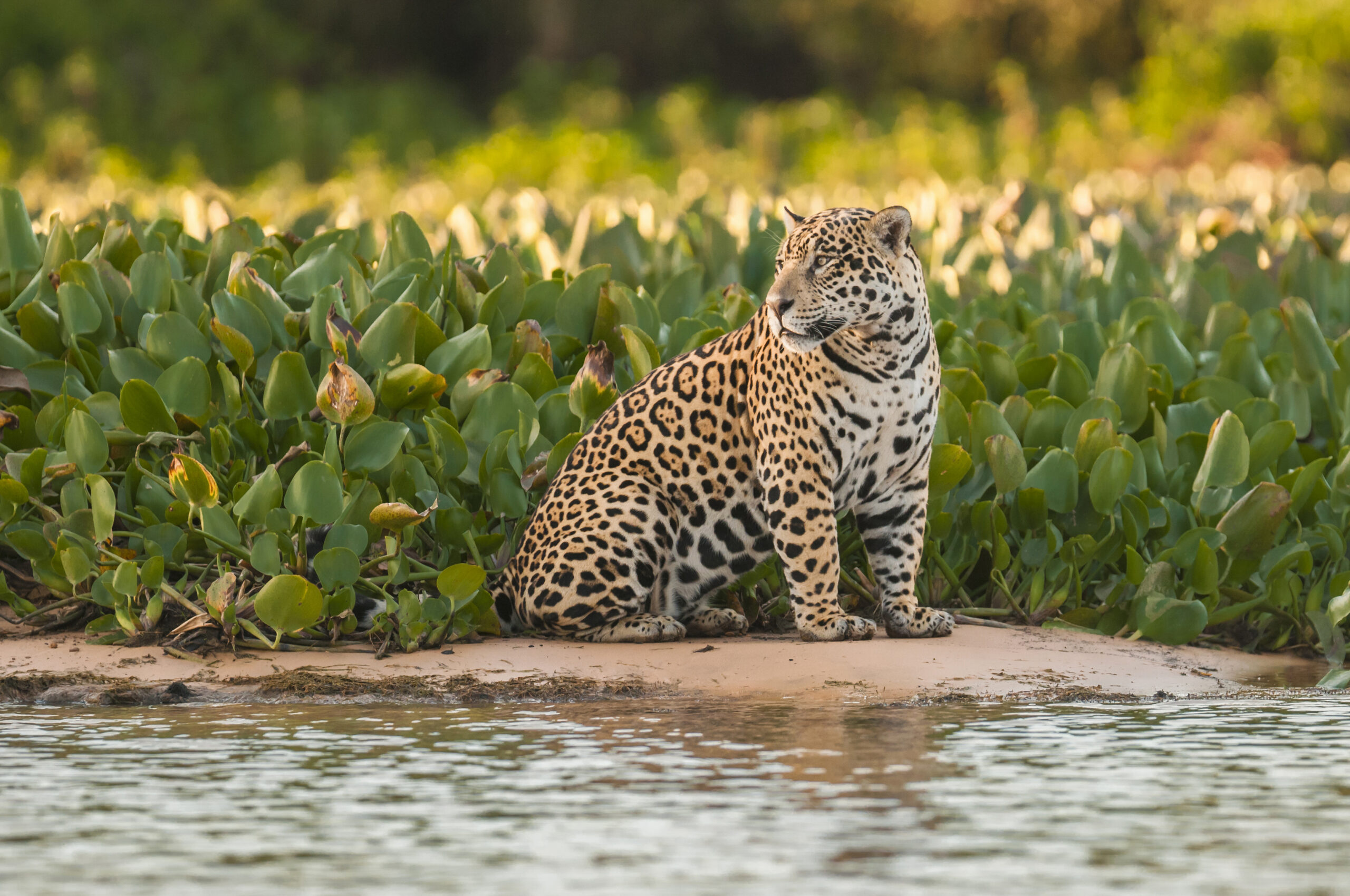Undiscovered Argentina
September 1, 2025

The swish of a tail in the long grass, the dip of a head to drink at the riverbank… They may seem elusive but once you have trained your eye, expect the first glimpse of a jaguar to set your heart racing. After lions and tigers, jaguars are the largest of the big cats. Like their fellow felines, they bring a spine tingling thrill with every sighting. Read on to find out where to see jaguars in the wild.

The jaguar is similar in appearance to the leopard, although jaguars are more solidly built and have shorter limbs. Of all the big cats, jaguars have the strongest jaws. They have adapted for crunching through tough reptilian scales and turtle shells that form a substantial part of their diet in some areas.

The jaguar is present in much of South and Central America. Even though their territory is much reduced from centuries past, they roam over large areas of the continent. They are mainly found in tropical or subtropical forests, swampland areas and landscapes featuring waterways. They have been sighted in the southern US states of Arizona and New Mexico too, though these occurrences are vanishingly rare. There is a strong popular association between jaguars and water. In fact, they can live in many environments from desert areas to rainforests.

Central and South America offer your best chance to see jaguars in the wild, and there are certain areas you should put on your shortlist if jaguar sightings are a priority. With the help of our local experts, we’ve put together this overview of our most jaguar-friendly destinations to help you decide where to go on your next adventure.
If you are serious about spotting a jaguar in the wild, then there is one destination that should shoot to the top of your list – the Pantanal wetland in Brazil. It is unquestionably the place with the highest likelihood of a jaguar sighting anywhere in the world.

The Amazon Rainforest may have a similar density, but the tangled vegetation and inaccessibility of many areas means an encounter is unlikely. The Pantanal on the other hand is much more open and the vegetation is more sparse. This is largely due to the fact that during the wet season much of the landscape is waterlogged. During the dry season, however, the watery ponds and marshes shrink back, leaving open grasslands and ensuring that the water-loving wildlife is concentrated around the area’s rivers.

The bonus for wildlife spotters is that man has fished these rivers for centuries and left the jaguar undisturbed. So, the sight of people approaching by boat does not send these magnificent creatures slinking towards the nearest cover. You’ll spot jaguars in the wild cruising along riverbanks, snoozing or fishing. Crucially, they will most likely allow you to observe and photograph them for long periods.

Where wild animals are concerned, nothing is 100% certain. However, to optimize your chances of seeing a jaguar in the wild, take a safari in the Pantanal wetlands. The mind blowing biodiversity in the area is an added bonus, making any Pantanal safari will an exciting and memorable adventure – with or without a jaguar sighting.

In Costa Rica, you can spot jaguars in the wild, too. They’re usually seen in protected zones where they are undisturbed by human activity. There are several areas that offer a reasonable chance of a sighting such as the National Parks of Monteverde, Santa Rosa, Tortuguero, Corcovado and Rio Macho. They are elusive because they prefer dense vegetation and often hunt at night. As a result, spotting a jaguar in Costa Rica is not guaranteed, but you stand the best chances in Tortuguero.

Changing habitats have forced jaguars to adapt their behavior to survive . Although the preferred territory of a lone male is usually hundreds of square kilometers, they have had to become more tolerant of other individuals because virgin forest is shrinking. An abundance of prey is the reason for this tolerance.

There are Jaguars present in most areas of Belize but the population is especially dense in Cockscomb Basin Wildlife Sanctuary. It was set up over 30 years ago as a protected section of forest stretching across almost 400 square kilometers of pristine habitat. There are around 200 jaguars in the reserve, which makes it one of the densest known populations of these elusive cats in the world.

That said, their shy nature and stealthy habits make them phenomenally difficult to spot, even if you overnight in one of Cockscomb’s camps. Their survival depends on their ability to remain out of sight and they are particularly adept at doing just that in Belize’s tangled rainforests. You are perhaps more likely to see evidence of jaguar activity in the reserve than an actual cat. For instance, you might find tracks or droppings on the way.

While you are keeping your eyes peeled for jaguars, there are plenty of exciting bird species to look out for. Also, there is a wide variety of other interesting wildlife, including other big cat species such as puma and ocelot as well as otters, peccaries, deer, pacas, and coatimundis.

The thrilling moment of locking eyes with a jaguar in the wild is an unforgettable wildlife encounter. Why not get in touch with our local experts today and find out what other fabulous experiences you could pack into your trip?
Explore all featured destinations
Join our mailing list for travel inspiration, trip recommendations, and insights from our local experts.